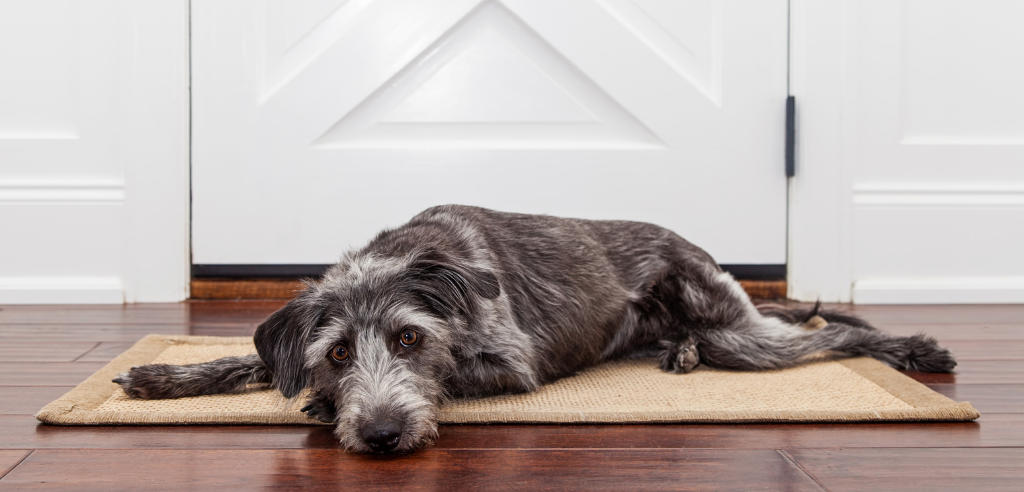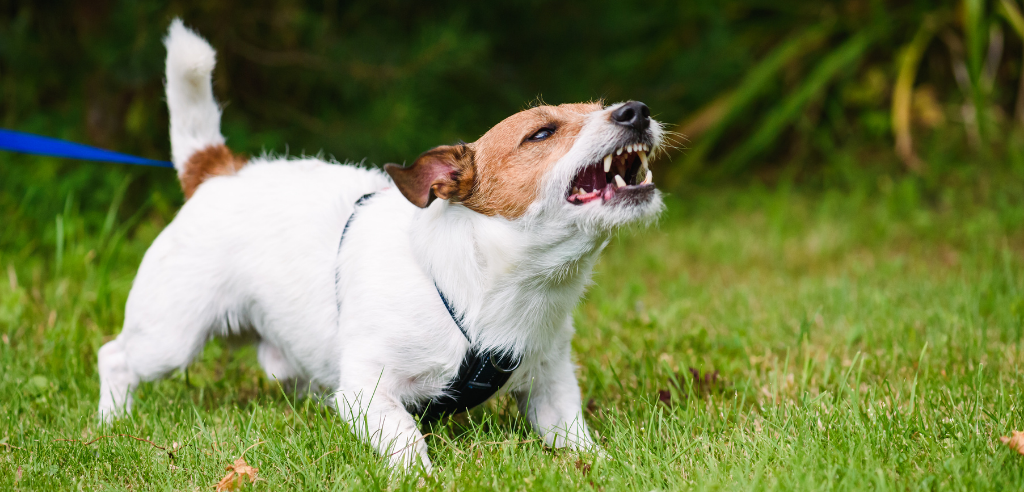This week is Dog Anxiety Awareness Week, and just like us humans, our four-legged friends can suffer with anxiety. In fact, an estimated 40% of dogs suffering with anxiety at some point in their lives, there’s never been a better time to raise awareness.
Life can present lots of challenges for our furry best friends – for example there are times when they might need to spend short periods all by themselves, times when they experience loud, unexpected and unexplainable noises, or when we might not be able to give them the attention they would like. If your dog isn’t sure how to cope when these things happen, they might become worried and distressed. Prolonged anxiety can also result in stress-related illness and poor physical health.
Today we’re sharing the different types of anxiety, the signs to look out for in your dog and how you can help to ease their suffering.

Types of Anxiety
There are generally 3 types of anxiety our dogs can suffer from. These are:
Fear anxiety – this can be caused by loud noises, strange people or animals, visual stimuli like hats or umbrellas, new or strange environments, specific situations — like going to the vets or car rides — or surfaces like grass or wood floors.
Separation anxiety: this is estimated to affect around 14 percent of dogs. Dogs with separation anxiety are unable to find comfort when they are left alone or separated from their family members. This anxiety often manifests itself in undesirable behaviours, such as urinating and defecating in the house, destroying furniture and furnishings, and barking. Dogs are also prone to trying to escape and can cause themselves serious injuries in the process.
Age related anxiety: this affects older dogs and can be associated with cognitive dysfunction syndrome (CDS). In dogs with CDS, memory, learning, perception, and awareness start to decline, similar to the early stages of Alzheimer’s disease in humans. This understandably leads to confusion and anxiety in senior dogs

Symptoms of anxiety
Whilst the symptoms will vary from dog to dog, the most common ones to look out for are:
- Aggression
- Peeing and pooing inside even though they’re house trained
- Drooling
- Panting
- Destructive behaviour
- Depression
- Excessive barking
- Pacing
- Restlessness
- Repetitive or compulsive behaviours

What you can do to help
If you suspect your dog is suffering from anxiety, the first thing to do is to speak to your vet. They will be able to confirm your suspicions and discuss ways you can help manage your dog’s anxiety. They will be able to help you identify the kind of anxiety your dog is suffering with and what their triggers are.
Based on the severity of your dog’s anxiety and the symptoms they exhibit, your vet might recommend an anti-anxiety medication for your dog or that you work with a behavioural therapist/dog trainer to work on coping strategies.

Anxiety prevention
You know what they say, prevention is often better than the cure. Here’s a few things you can do to help prevent your dog from getting into situations that might make their anxiety worse:
Get your routine down
Anxiety is an unpleasant apprehensive feeling of nervous anticipation about something that might, or might not, happen. That’s why most dogs benefit from a general daily routine, because being able to predict what is happening around, or to, them and when, can help them to feel safe and secure.
Body Language
One of the best things you can do is to learn how to read your dog’s body language. Knowing when your dog is uncomfortable or scared can help you avoid negative experiences or use them as a positive training moment. Body language can also tell you when your dog is getting anxious, which is especially useful if your dog has a history of aggression-related anxiety.
Socialisation
Proper socialisation can prevent the development of anxiety. Introducing your dog to new people, dogs, animals, places, and experiences can help avoid any negative responses later on in life.
Situation Avoidance
If your dog has been diagnosed with anxiety issues, you can also try to avoid or prevent situations that trigger your dog’s anxiety. For example, if you know that your dog grows anxious around large groups of dogs, you should avoid parks at busy times. Avoidance does not mean that you need to put your life on hold, but it can reduce some of the stress on you and your dog.
If the source of the anxiety cannot be avoided, preventive measures like leashes, body harnesses, and muzzles, can prevent dangerous situations. Once you know your dog’s triggers, you can prepare for these situations ahead of time.



